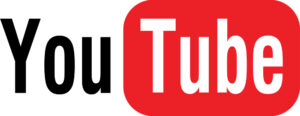Which Video Platform Should I Use?
Choosing a video platform on which to host your video is critical to the success of any campaign.
The information below will help you choose wisely.

As the most popular video platform, YouTube has over 1.5 billion active users every month. Some entrepreneurs have even used YouTube to create their own full-time vlogger career.
Since YouTube is the second largest search engine next to Google, the potential SEO value of optimized videos makes this video platform extremely attractive.
Pros:
- YouTube videos are shown at the top of Google search result pages for easy viewing.
- You can easily embed YouTube videos into your website or landing pages.
- Creating playlists of related videos you create helps your audience consume more of your content on repeat.
- Easy video sharing on other social media platforms.
- YouTube has a built-in community where people can subscribe to your channel for updates on when you post videos.
- You can make extra money for your business through the Ads platform.
Cons:
- Low security on YouTube videos so your videos can be ripped and stolen.
- Some videos take time to buffer or load within the YouTube platform.
- YouTube suggests related videos that aren’t always relevant.
- Viewers can get annoyed if there are ads that pop up before they can watch a video.
- You must be very wary of potential copyright infringement with images, music, etc.
Cost:
Free hosting for video creators and for viewers to watch

If you’re looking for a more professional look to your video platform, Vimeo could be a great fit. While there are limits to how much video you can upload, it’s a contender because of its powerful analytics, customization, and community.
Pros:
- Unlimited video length on paid accounts, making it a great fit for course creators or those hosting online conferences and summits.
- Higher quality video display than YouTube and other video platforms, especially on full screen.
- There are no advertisements or pop-ups on Vimeo.
- Vimeo has become quite popular for short films and professional documentaries.
- Advanced video analytics within the Vimeo dashboard tool.
Cons:
- Lower searchability and exposure than YouTube.
- To get the most out of Vimeo, you must invest in a paid account with a monthly fee.
- No packages include unlimited video uploads so if you don’t want file size limits, Vimeo is not for you.
Cost:
Starts at $7/month for a Plus account with 5 GB/week
![]()
Specifically built for business owners, Wistia has become a popular choice among online entrepreneurs and content creators. While this video platform is costly, it’s one of the most powerful options on the market.
Pros:
- More detailed analytics than any other video platform including heat maps, video engagement metrics, and more.
- You can adjust the display dimensions to better fit your website from any device since it’s also mobile responsive.
- Videos can be password protected on Wistia for private viewing.
- You can add call-to-action links and lead capture forms within the tool.
- Wistia works great for SEO because you can include keywords in your video descriptions and titles.
Cons:
- Wistia is the most expensive out of all the other video platforms.
- Pricing is based on how many videos you upload so if you have many videos
- even at shorter lengths, you’ll have to pay up.
- You must have a paid account in order to customize the video player’s branding.
Cost:
Free account for up to 3 videos, $99/month for 10 videos

Also created with businesses in mind, Brightcove is one of the leading video platform hosts since it is the top choice of many Fortune 500 companies. Its servers run at lightning speed (okay, maybe not that fast, but pretty quick) and it has advanced live-streaming capabilities.
Pros:
- Trusted by some of the top companies in the world.
- Brightcove supports plugins and allows for more customization options.
- You can sign up for a free 30-day trial to test the tool for yourself.
- Brightcove has global servers that run smoothly 24/7.
- Positive reviews about their powerful customer support team.
Cons:
- This tool is more robust than most small businesses will need.
- Pricing is labeled on the website so you have to talk to their sales team.
Cost:
Must contact sales team after 30-day free trial
Social media video platforms for maximum shareability
You didn’t think we would leave out social media platforms, did you? While the video platforms above are great for longer live video events and studio quality pre-recorded videos, social media allows you to connect with your audience in a more casual way.
With the rise in videos recorded with a selfie phone camera or a simple point-and-shoot, social media has made video creation accessible for all. And the expected production value of videos on social media is much lower, making it a great fit for beginners.
To get started with filming and publishing videos on social media, here’s a deeper look into the most popular platforms.

Within Facebook groups or Facebook Business pages, you can upload pre-recorded videos at any time for optimal shareability. If you want a more low-key yet still influential way to connect with your audience, Facebook Live can help.
Through Facebook Live, you can hop on and talk to your followers live in a matter of seconds. You can also create a custom video description and drop a link, create a call-to-action, or give more information about what you’re talking about in the live stream.
Since so many people are already active on Facebook, it makes for a great social media video platform. Experiment with video and keep an eye on your Facebook analytics to see how it performs.

Like Facebook Live, Instagram Live is a great way to engage your Instagram followers within the platform. Since Instagram users are more interested in staying in the platform to get value than clicking outside links, Instagram Live has become a great complement to your Instagram feed.
When Instagram Live was first launched, the video disappeared as soon as the live stream ended. Since many users didn’t like this feature, Instagram Live was updated so that live stream videos are available for 24 hours. It’s still in its infancy, but Instagram Live will continue to grow with new features and updates.
I haven’t done much with Instagram Live, but I’ve become obsessed with Instagram Stories. They quickly became one of my top lead drivers for my copywriting business this year. I know, it surprised me too! Who knew that 10-second video clips could make such a big impact?
Three of my favorite clients told me that my Instagram Stories were the determining factor behind why they hired me. They felt like they already knew me after watching the short video clips in my Stories, which made contacting me about working together that much easier.
So what was I sharing? Trust me, it was nothing crazy or ultra-strategic. I simply started by posting videos that shared more of my day-to-day life as a solo entrepreneur. I also used it as a platform to start important conversations with others about what it was like to run a business your own way. To my surprise, other people enjoyed it too.
Instagram Live and Instagram Stories are great places for innovative ideas, so start brainstorming how you can use these social media video platforms for your business.

Periscope was around before Facebook Live and Instagram Live, making it one of the trailblazers of live video. I was an early adopter of Periscope and while I don’t use the platform as much now, I learned a lot about building a community through video because of it.
Periscope is a Twitter product so when you go live, you have the option to share the link with your Twitter followers and invite your viewers to do the same. You can follow other live streamers and get notifications on your phone when they go live.
When Periscope launched, all videos would disappear after 24 hours, much like Instagram Live. Now you can put “#save” in the title of your broadcast so it is available to view on your profile forever. You can also auto-download your live broadcasts to your phone for later repurposing or posting.
Periscope has a fairly niche audience since its sole function is live streaming, unlike Instagram and Facebook that are used for other purposes. It might be worth experimenting with depending on where your audience lives.

When you mention Snapchat in public, you’re bound to get a wide array of opinions and reactions. What was once used for its disappearing-photo feature has now transformed into a video consumption hotspot. So is this social media video platform right for your business?
Sixty percent of Snapchat users are under 25 years old, making it a no-brainer for brands who want to engage with younger audiences. Snapchatters also watch more than 10 billion videos every day. It’s most well-known for its Stories feature, which was available before Instagram Stories, and hilarious photo filters.
If your business caters to younger audiences and has a fun, snarky tone, Snapchat could be a good fit. If not, Instagram Stories or similar platforms may be a better option.

 A California Video Production Company
A California Video Production Company